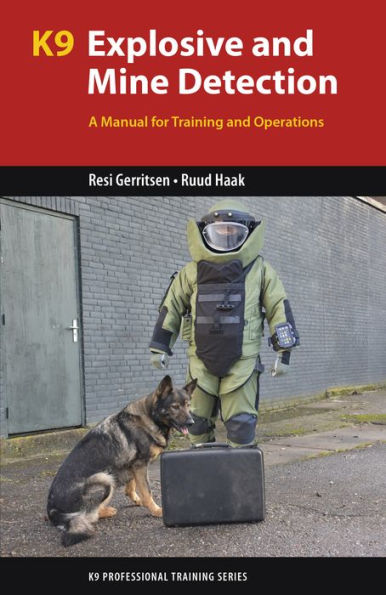Learn how to:
- Train your K9 to detect and safely alert for explosive substances.
- Conduct operational searches in buildings, vehicles, ships, and planes.
- Train your dog for the specialized work of mine detection.
In the high stakes realm of explosive detection, where even the smallest mistake can have fatal consequences, the margin of error is zero. Well trained dog-handler teams can play a key role in explosive detection, but only if their training is top notch.
Dr. Resi Gerritsen and Ruud Haak have worked with police departments around the world to help them establish and improve their K9 explosive detection training programs, and in this book they share their expertise with handlers and trainers looking to enhance their own performance.
They teach how to pick the right dog for explosive detection work, how to train the dog to detect explosives, and how to properly execute a variety of training and operational searches. They also provide some of the background knowledge you'll need about common explosives and the many factors that can influence a K9's work. Along with essential health and safety precautions for you and your dog, you'll also learn how to test and certify dogs and handlers to ensure excellent performance in the field.
Learn how to:
- Train your K9 to detect and safely alert for explosive substances.
- Conduct operational searches in buildings, vehicles, ships, and planes.
- Train your dog for the specialized work of mine detection.
In the high stakes realm of explosive detection, where even the smallest mistake can have fatal consequences, the margin of error is zero. Well trained dog-handler teams can play a key role in explosive detection, but only if their training is top notch.
Dr. Resi Gerritsen and Ruud Haak have worked with police departments around the world to help them establish and improve their K9 explosive detection training programs, and in this book they share their expertise with handlers and trainers looking to enhance their own performance.
They teach how to pick the right dog for explosive detection work, how to train the dog to detect explosives, and how to properly execute a variety of training and operational searches. They also provide some of the background knowledge you'll need about common explosives and the many factors that can influence a K9's work. Along with essential health and safety precautions for you and your dog, you'll also learn how to test and certify dogs and handlers to ensure excellent performance in the field.

K9 Explosive and Mine Detection: A Manual for Training and Operations
320
K9 Explosive and Mine Detection: A Manual for Training and Operations
320
Product Details
| ISBN-13: | 9781550596908 |
|---|---|
| Publisher: | Brush Education |
| Publication date: | 07/07/2017 |
| Series: | K9 Professional Training Series |
| Pages: | 320 |
| Product dimensions: | 5.40(w) x 8.50(h) x 0.70(d) |
